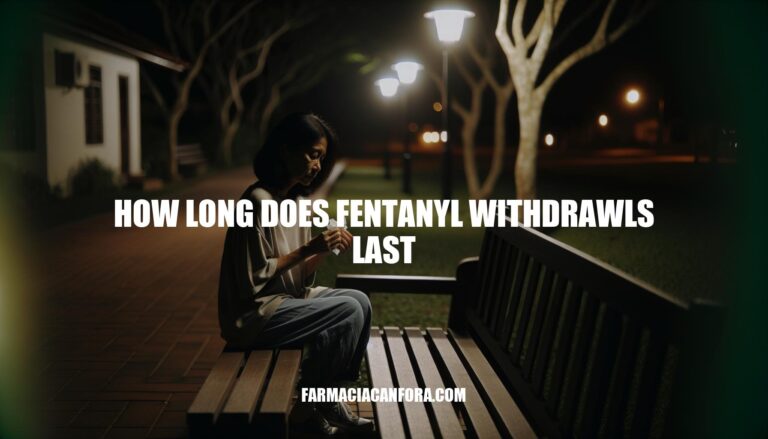


Fentanyl withdrawal typically lasts between 7 to 10 days, though it can vary depending on individual factors. Understanding the duration of fentanyl withdrawal symptoms is crucial because it helps individuals and healthcare providers prepare for and manage the detox process effectively. Proper knowledge can ensure safer withdrawal, reduce the risk of relapse, and provide better support during recovery.
Here are some key factors that can affect the duration of fentanyl withdrawals:
Dosage: Higher doses of fentanyl can lead to more intense and prolonged withdrawal symptoms. The body becomes more dependent on the drug, making it harder to adjust when the drug is no longer present.
Duration of Use: The longer someone uses fentanyl, the more entrenched the dependency becomes. Prolonged use can lead to more severe withdrawal symptoms that last longer.
Individual Health Conditions: A person’s overall health, including any co-occurring mental health disorders or chronic illnesses, can influence the withdrawal process. Poor health can exacerbate symptoms and extend the withdrawal period.
Method of Administration: How fentanyl is taken (e.g., patches, injections, or illicit forms) can also impact withdrawal. Different methods can affect how quickly the drug is metabolized and cleared from the body.
Frequency of Use: Frequent use can lead to higher levels of the drug in the system, which can prolong the withdrawal process as the body takes longer to eliminate the drug.
Genetic Factors: Genetic predispositions can influence how a person’s body reacts to fentanyl and how quickly they can recover from withdrawal.
Support Systems and Environment: Having a strong support system and a stable environment can help manage withdrawal symptoms more effectively, potentially shortening the duration.
Each individual’s experience with fentanyl withdrawal can vary widely based on these factors. Seeking medical assistance can help manage symptoms and ensure a safer withdrawal process.
How long does fentanyl withdrawals last?
Withdrawal symptoms can include nausea, vomiting, muscle pain, anxiety, and insomnia. The severity and duration can vary based on the individual’s usage patterns and overall health.
Fentanyl withdrawal symptoms typically begin 8 to 24 hours after the last dose. The symptoms peak in intensity around 36 to 72 hours. During this peak period, individuals may experience severe muscle and bone pain, insomnia, diarrhea, vomiting, and intense cravings.
After the peak, symptoms gradually decrease in severity but can persist for 7 to 10 days. Some symptoms, like anxiety and sleep disturbances, may last for several weeks.
Medical assistance plays a crucial role in managing fentanyl withdrawals by providing medications and support to ease symptoms and ensure safety. Professional help can significantly influence the duration and severity of withdrawal symptoms.
Medications: Doctors may prescribe medications like methadone, buprenorphine, or clonidine to reduce withdrawal symptoms and cravings. These medications can help stabilize the patient and make the withdrawal process more manageable.
Monitoring: Medical professionals monitor vital signs and overall health, addressing any complications that arise. This reduces the risk of severe symptoms and potential health issues.
Support: Emotional and psychological support from healthcare providers can help patients cope with anxiety, depression, and other mental health challenges associated with withdrawal.
Overall, professional medical assistance can shorten the duration of withdrawal symptoms and make the process safer and more comfortable.
Fentanyl withdrawal typically lasts between 7 to 10 days, but can vary depending on individual factors such as dosage, duration of use, health conditions, method of administration, frequency of use, and genetic predispositions.
The onset of symptoms usually begins within 6 to 24 hours after the last dose, peaks in intensity around 36 to 72 hours, and gradually decreases over the next few days. Seeking medical assistance is crucial for managing withdrawal symptoms, as it can significantly influence the duration and severity of symptoms.
Medications like methadone, buprenorphine, or clonidine can be prescribed to reduce symptoms and cravings, while monitoring and emotional support from healthcare providers can help patients cope with anxiety, depression, and other mental health challenges associated with withdrawal.
How long does fentanyl withdrawals last?
The answer is that it varies, but seeking professional help is essential for a safer and more comfortable recovery.